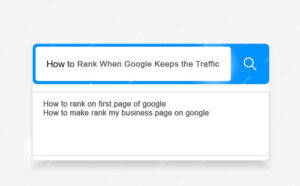Introduction:
In the digital age, social media platforms serve as powerful channels for reaching and engaging diverse audiences. However, crafting content that resonates requires an understanding of each platform’s unique characteristics and user behaviors. This article delves into the best practices for creating effective content tailored to various social platforms.
Understanding Different Social Platforms
Each social media platform caters to distinct demographics and user preferences. Facebook remains a hub for a broad age range, emphasizing community and personal connections. Instagram thrives on visual appeal, attracting younger audiences. Twitter is the realm of concise, real-time updates, while LinkedIn focuses on professional networking. YouTube is the go-to for video content, and TikTok is known for its short, engaging videos targeting Gen Z. Understanding these nuances is crucial for effective content creation.
Tailoring Content to Platform-Specific Audiences
Crafting content that speaks directly to the audience of each platform is essential. For instance, a professional tone works well on LinkedIn, while a more casual, visually appealing approach suits Instagram. Knowing the audience’s preferences and behavior patterns helps in designing content that captures their attention and encourages engagement.
Best Practices for Facebook Content
Facebook’s algorithm favors content that sparks interaction. High-quality images, engaging videos, and interactive posts like polls or questions perform well. Longer-form content, such as articles and detailed updates, also finds a home here. Utilizing Facebook Stories and Live videos can boost engagement and reach. Consistency and timely responses to comments further enhance the platform’s community-centric nature.
Optimizing Content for Instagram
Instagram is a visual-centric platform where aesthetics matter. High-resolution images, well-crafted captions, and the strategic use of hashtags are vital. Stories and Reels provide opportunities for more casual, behind-the-scenes content. Collaborations with influencers and user-generated content can significantly expand reach. Consistency in visual style and posting schedule helps maintain audience interest.
You would like to read: Creating A Successful Content Calendar For Your Blog
Crafting Effective Twitter Posts
Twitter’s fast-paced environment demands brevity and wit. Tweets should be concise, engaging, and timely. Incorporating trending hashtags and participating in relevant conversations can increase visibility. Visual content, such as images, GIFs, and videos, enhances tweet performance. Regular posting and active engagement with followers through replies and retweets foster a dynamic presence.
Engaging LinkedIn Audiences
LinkedIn content should be professional and value-driven. Thought leadership articles, industry insights, and professional achievements resonate well. Visual content, including infographics and videos, can also enhance engagement. Consistency in posting and participating in groups or discussions establishes authority and builds a professional network.
Creating Impactful YouTube Videos
YouTube thrives on high-quality video content that provides value. Tutorials, product reviews, and vlogs are popular formats. Attention-grabbing thumbnails and SEO-optimized titles and descriptions are essential for visibility. Consistent posting schedules and encouraging subscriptions and comments help build a loyal audience. Engaging with viewers through comments and community posts strengthens the connection.
Strategies for TikTok Success
TikTok’s algorithm favors creativity and engagement. Short, captivating videos with trending music or effects perform well. Participating in challenges and using popular hashtags can boost discoverability. Authenticity and humor are key elements that resonate with TikTok’s younger audience. Regular posting and interaction with followers through comments and duets enhance engagement.
You would like to read: Content Marketing Mistakes And How To Avoid Them
Measuring and Analyzing Performance
Analyzing content performance across platforms is crucial for refining strategies. Metrics such as engagement rates, reach, and conversions provide insights into what works and what doesn’t. Tools like Google Analytics, platform-specific insights, and third-party analytics tools help track performance. Regularly reviewing these metrics ensures that content remains effective and aligned with audience preferences.
Conclusion
Creating effective content for different social platforms requires a nuanced understanding of each platform’s unique characteristics and audience behaviors. By tailoring content to meet these specific needs, leveraging best practices, and continuously analyzing performance, businesses can maximize their reach and engagement, ultimately driving success in the digital landscape.










